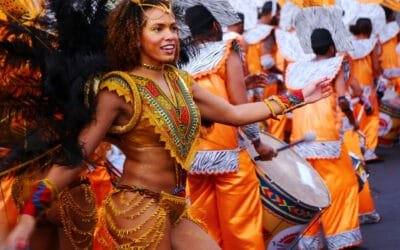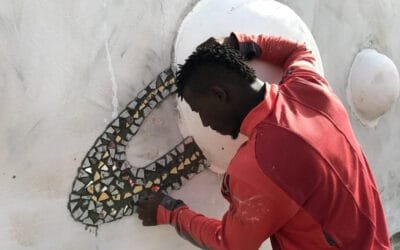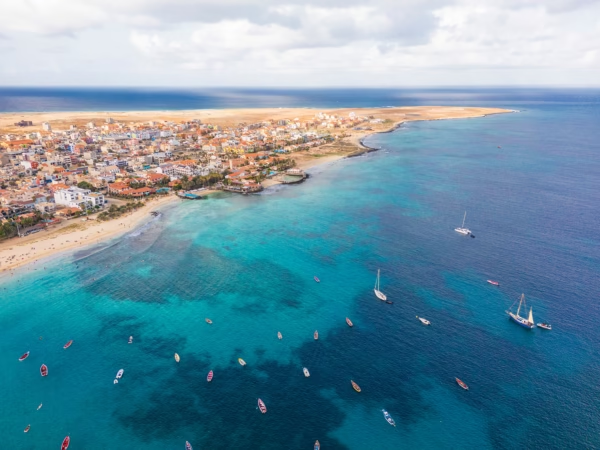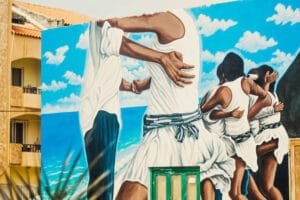Escudos: Introducing People from Cape Verdean Banknotes
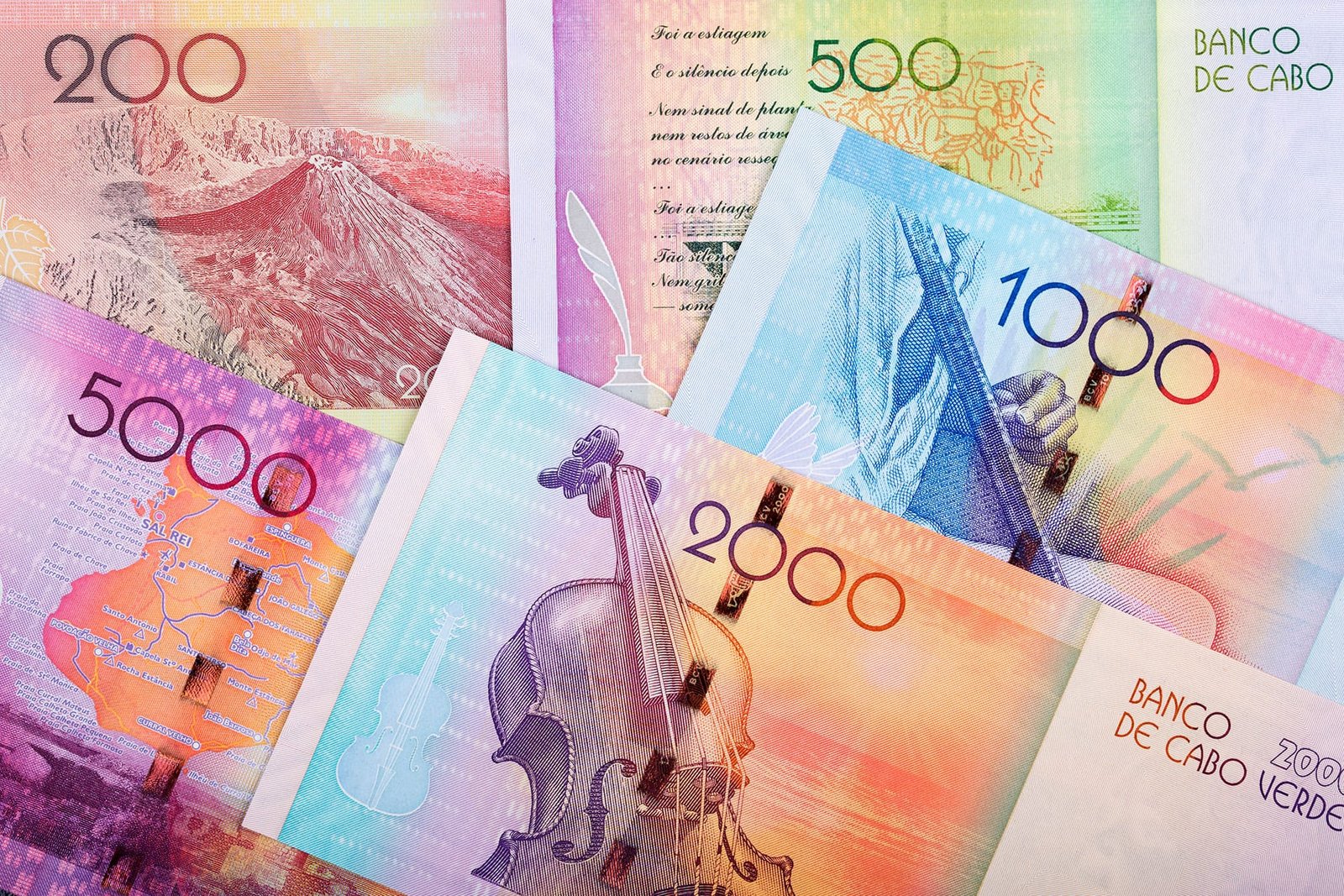
Decoding the Escudo: What the Designs on Cape Verdean Banknotes Mean
Cape Verde’s escudo banknotes are more than money. They’re a canvas of cultural heritage. Each denomination features well-known figures, iconic landscapes, and symbols chosen to reflect the nation’s history, values and identity. From medical visionaries to volcanic landmarks, the imagery offers travellers and locals alike a visual journey through Cape Verdean pride.
Read also: Escudos – All You Need to Know About Caboverdean Currency.
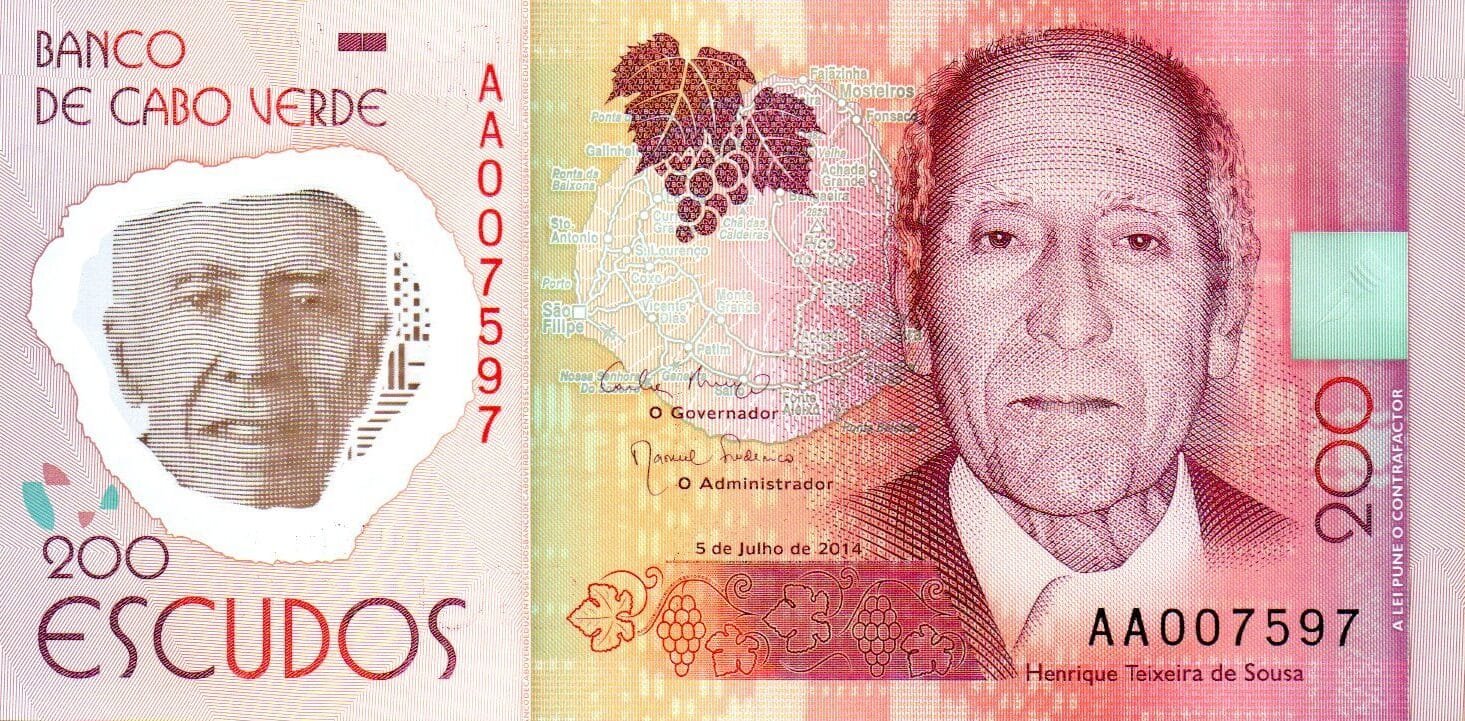
200 Escudos Banknote: Henrique Teixeira de Sousa
The 200 escudo banknote came into circulation in 2015 and is a tribute to the Cabo Verdean doctor and writer Henrique Teixeira de Sousa (1919-2006). Behind him, we can see his native island, represented by an image of the Fogo volcano, where his work in favour of minimal public health structures was remarkable. Henrique Teixeira de Sousa was a writer mindful of the values of Cabo Verdeanity. He published some of the most renowned works in Cabo Verdean literature, including Contra Mar e Vento, Ilhéu de Contenda and Capitão de Mar e Terra.
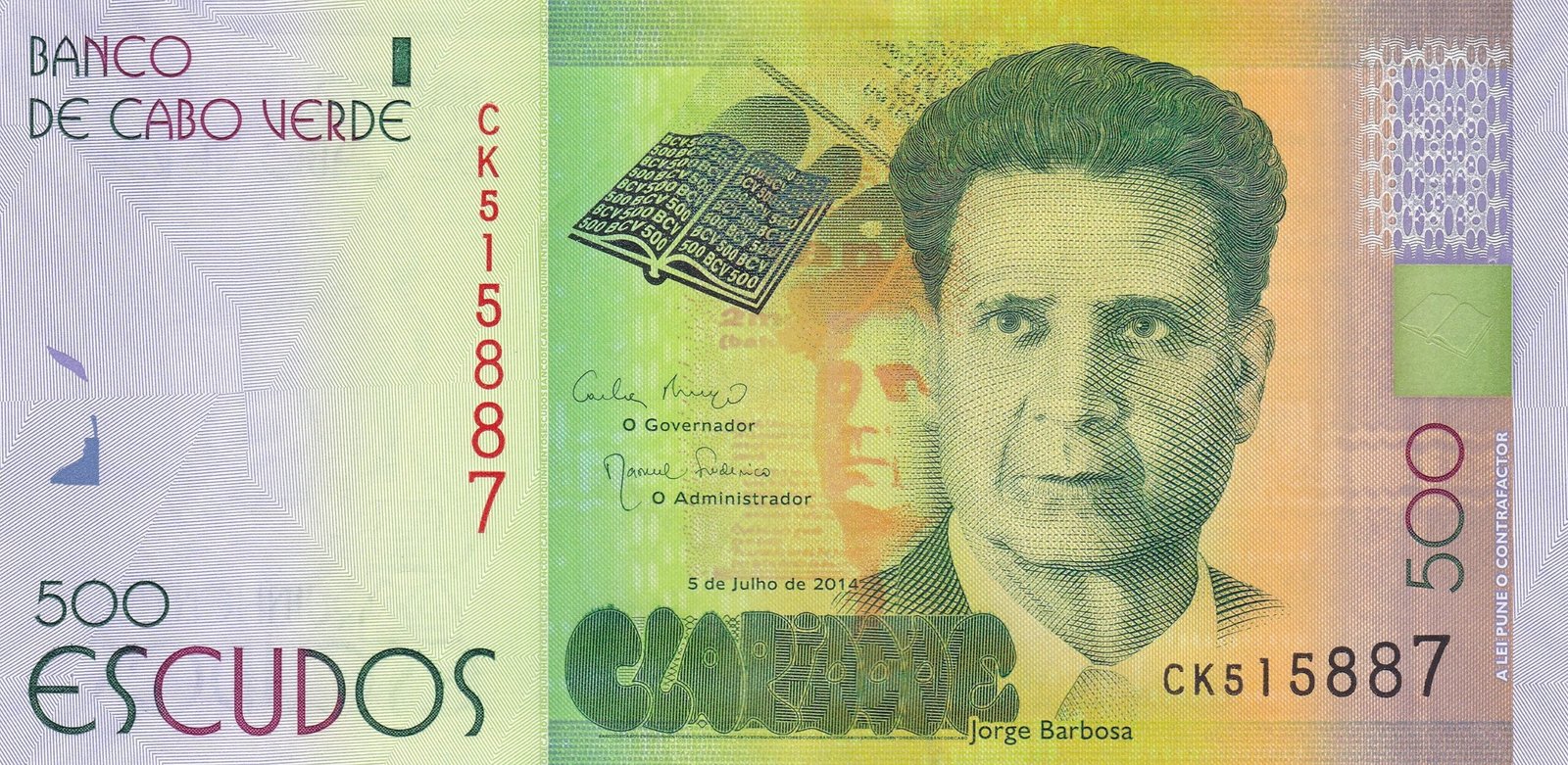
500 Escudos Banknote: Jorge Barbosa
The 500 escudo banknote honours one of the most prestigious figures in modern Cabo Verdean poetry, Jorge Barbosa (1902-1971). Behind him, his native island, Santiago. One of the founders of the literary movement Claridade, which marks a phase of Cabo Verde’s aesthetic and linguistic contemporaneity, based on the cultural, social and political emancipation of Cabo Verdean society, is more aware of its daily life realities. Jorge Barbosa’s poetry reflects the archipelago’s problems and the Cabo Verdean people’s social drama, including drought, hunger, emigration, isolation and insularity.
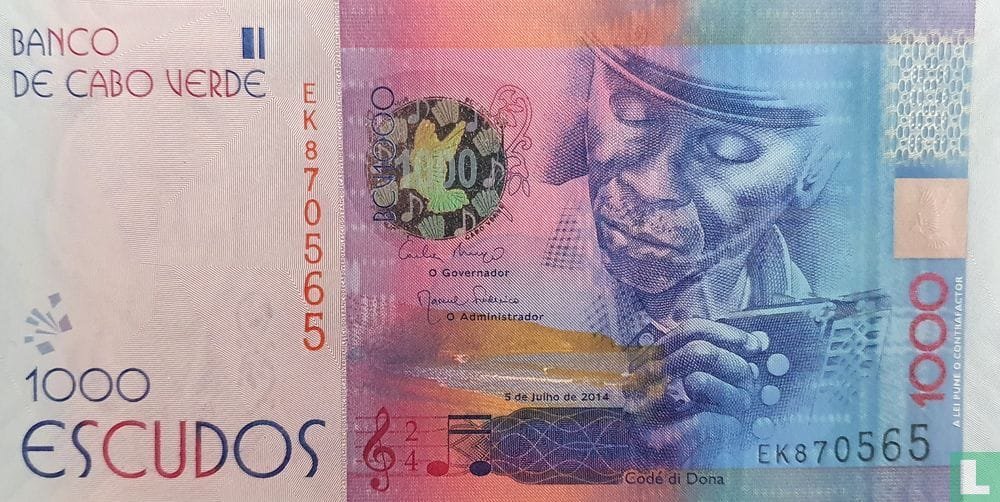
1000 Escudos Banknote: Codé Di Dona
The 1000 escudo banknote honours one of the most emblematic Cabo Verdean songwriters and musicians, Codé Di Dona (1940-2010). His real name is Gregório Vaz. He exalts the musical genre known as Funaná. Considered one of the essential figures of Funaná, Codé Di Dona interpreted the deepest feelings of the Cabo Verdean soul through his songs, such as “Fomi 47,” “Praia Maria,” and “Pomba,” among others. Codé di Dona was also an excellent player of the accordion, one of Funaná’s paradigmatic instruments, along with the ferrinho, which is represented in the note.
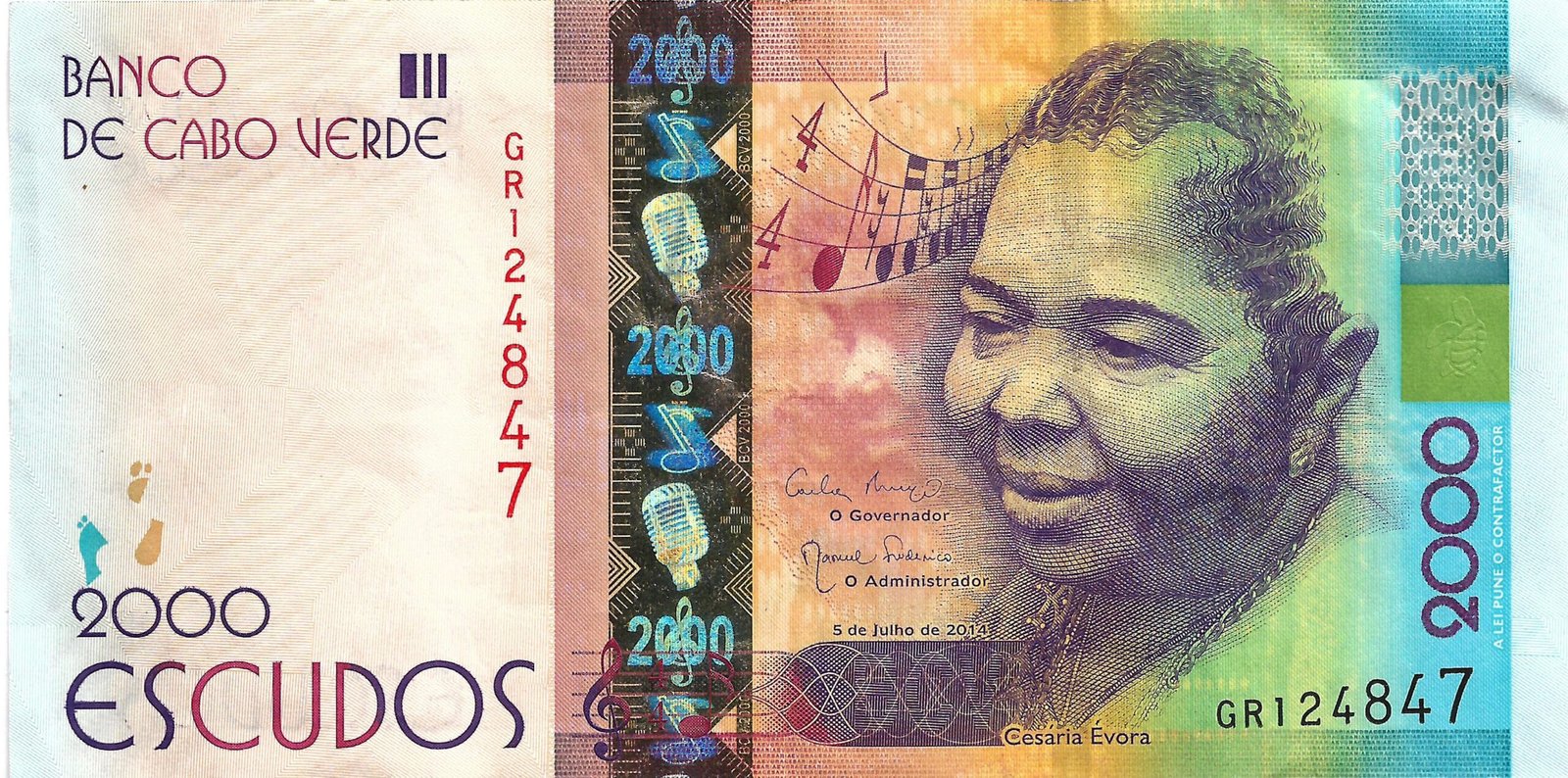
2000 Escudos Banknote: Cesária Évora
The 2000 escudos note aims to highlight one of the greatest exponents of Cabo Verdean musical culture, Cesária Évora (1941-2011). She was able to sing about the experiences and feelings of her people so well that it made the whole world aware of their joys and sorrows.
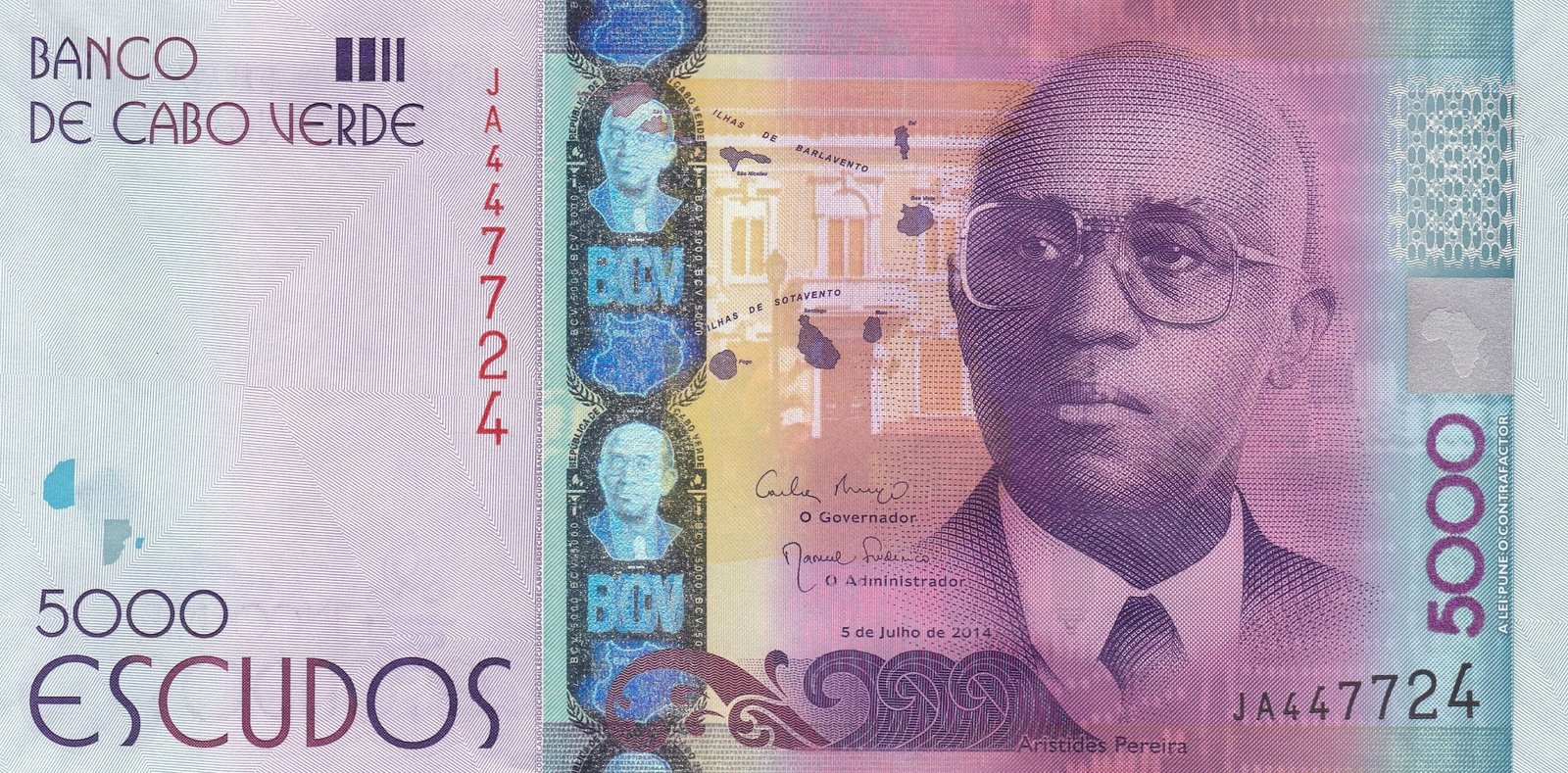
5000 Escudos Banknote: Aristides Maria Pereira
The 5000 escudo banknote honours one of the most respected Cabo Verdean politicians, Aristides Maria Pereira (1923-2011), a figure who distinguished himself in the struggle for the liberation of the Cabo Verde islands from colonial domination and was the first President of the Republic of Cabo Verde. The note is a tribute to his native Boa Vista, through an image of the island’s landscape, featuring in the foreground the chimney of a pottery-making factory that was buried by sand from the Sahara Desert.
Common Threads Across Denominations
-
Portraits: Celebrate writers, leaders, doctors, musicians — each an icon in Cape Verde’s journey.
-
Landscapes & Structures: Volcanoes, ports, historic buildings.
-
Cultural Symbols: Musical instruments, traditional scenes, local crafts, indigenous plants.
-
Security Elements: Watermarks reveal central figures; transparent strips feature the coat of arms; polymer notes add tactile nuance.
Altogether, the escudo series offers a mini-museum of identity with every purchase, reminding each user — from schoolchildren to visitors — of Cape Verde’s islands, people, and stories.
Using Escudos: Travel and Practical Advice
-
Carry a mix of 200 and 500 notes for flexibility; larger bills can limit change options.
-
Euro use is everyday in tourist areas, but escudos remain essential off the beaten track.
-
Consider collecting notes as mementoes — the designs change infrequently and highlight national themes.
-
Respect the portraits and symbols when handling money, as they reflect the public esteem for national figures.
Bibliography / Sources
- Escudo Banknotes described on Banco de Cabo Verde website;
- Pictures: Banknotes from Cape Verde on Numista.
